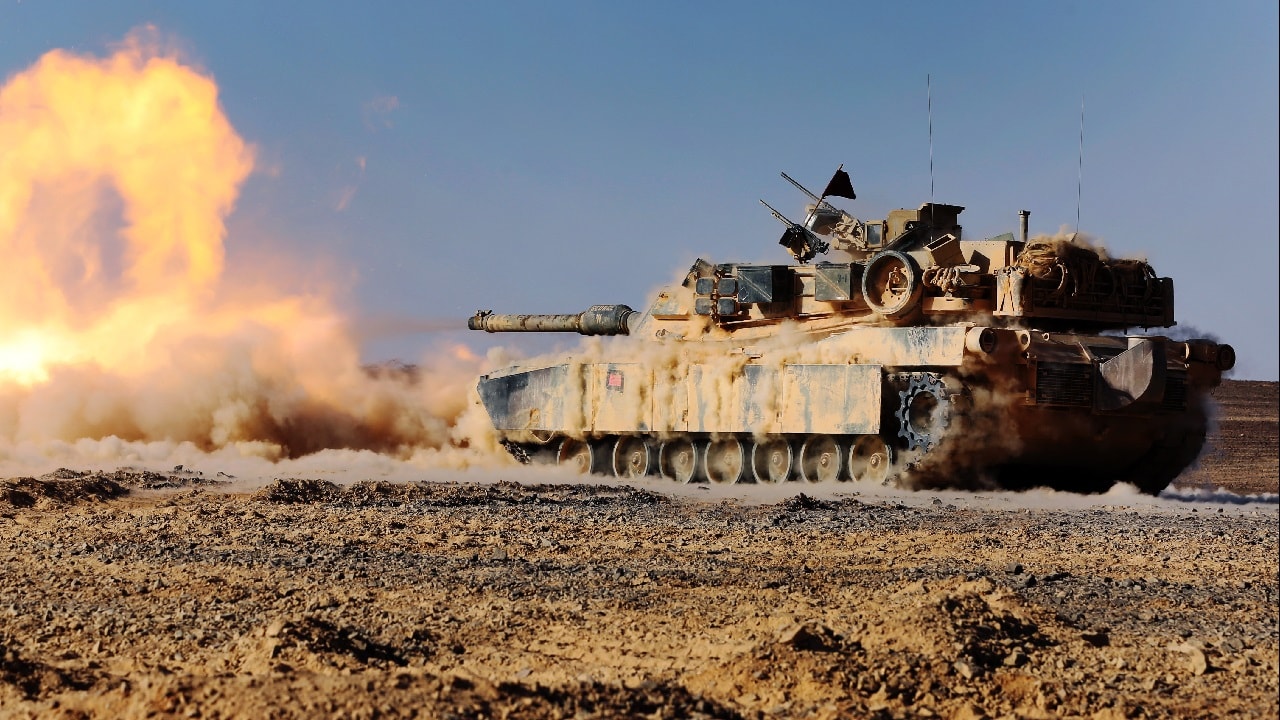
Andrew A. Michta
A British Army Challenger 2 Main Battle Tank (MBT) lays down a smoke screen during Spring Storm 19, Estonia's largest annual military exercise. Roughly 9,000 soldiers from Estonia, other NATO Allies and partner nations have gathered near the town of Jõhvi to engage in a collective defence exercise, strengthening their ability to work together in times of crisis. The exercise runs from 29 April until 10 May.
Since the ill-fated Oval Office meeting between Presidents Trump and Zelensky, the headlines have been dominated by pronouncements about the end of NATO, the United States’ alleged decision to give up the post of SACEUR and European efforts underway to develop a “5-10 year plan to replace the US in NATO.”
At the core of this unprecedented turmoil in transatlantic relations is what appears to be a fundamental shift in the United States’ relationship with Russia, which is the larger context of the Ukraine cease-fire negotiations.
So far, the benefits of the negotiation process have favored Moscow, as the administration has already effectively taken Russia out of political isolation, while continuing to extend considerable latitude to Russia during this negotiation compared to the pressure it has applied to Ukraine.
During the latest round, which saw Kyiv agree to a thirty-day ceasefire, Moscow announced simply that it would refrain from attacking Ukraine’s power grid only to promptly launch another round of strikes at civilian targets in the country, which shows how skewed this process has become.
A third element of this policy shift is the administration’s relative disengagement when it comes to relations with Europe, with questions raised about the future of transatlantic relations. Key European capitals are not helping either, with President Emmanuel Macron speaking yet again about Europe’s need for “strategic autonomy” and the incoming German Chanceller Friedrich Merz declaring that the time come for Europe to become independent of the United States.
In short, the speed with which the largest European allies appear to have decided in response to the shock the Trump administration has delivered to the NATO ecosystem that their future no longer lies with America augurs poorly for the alliance’s future.
If Washington continues on its current trajectory when it comes to transatlantic relations, and Brussels, Berlin, and Paris continue to act as though they could do without the United States when it comes to their security, the logical endgame will be that eventually the lights may go out at NATO Headquarters and SHAPE loses its raison d’être.
It should be clear now that the gambit pursued by the Trump administration is not just to improve but to build a cooperative relationship with Russia in order to eliminate the points of stress – including the war in Ukraine. The principal objective of his strategy seems to be to put some daylight between Moscow and Beijing, so that even if Washington cannot fully execute a successful “Kissinger-in-reverse” strategy and peel Russia away from China completely, then at least this approach will restrain Putin from supporting Xi in the event of US-China clash in the Indo-Pacific.
If this is the principal design behind America’s rapprochement with Russia, its chances for success are very low and would have to be paid for with dramatic US concessions. Russia’s ability to pursue its neo-imperial drive into Europe hinges on continued Chinese support, without which it would not have been able to stay the course in Ukraine while maintaining a semblance of stability at home.
Regardless of how the ceasefire negotiations in Ukraine end, Russia’s economic weakness will make it imperative to remain aligned with China.
The most important aspect of the Trump administration’s policy realignment vis-à-vis Russia is that it risks undoing the last eighty years of US national security strategy for the Atlantic theater that rested on the principle of deterring and, if need be, defending Europe against Russia’s imperial encroachments.
In the final analysis, for Vladimir Putin the outcome of the ongoing negotiations about ending the war in Ukraine is about how much latitude Russia can get in Europe, i.e., which of its initial demands are going to be met or rejected by the Trump administration.
An ancillary question here is whether America’s national security strategy can be reduced to a series of transactional deals, or if in fact cultural and historical factors will ultimately carry the day.
Is the United States in effect reverting to the 19th century-type of international relations that defined the Age of Empire and where our experience of the past eighty years carries little to no weight?
The US-European alliance has arguably entered its most difficult period in 80 years, one that will define the future of NATO and transatlantic relations going forward.
It is crucial that Washington return to the basics when it comes to its understanding of Russian imperialism.
It must also appreciate the implication of what the potential hollowing out of NATO and, should it come to that, a return to the 19th century type of the spheres of influence in Europe means for American interests, not only on the continent, but perhaps equally importantly in other theaters, including the Pacific.
And at the same time, Berlin and Paris, and especially the leadership of the European Commission, should take a breath and look over the horizon to fully appreciate what a Europe unmoored from the United States would look like, as both the Russians and the Chinese are watching and ready to exploit to the hilt the current chaos and potential decomposition of the democratic West.
It’s time for cooler heads to prevail on both sides of the Atlantic.
Source: https://www.19fortyfive.com/2025/03/donald-trumps-russia-strategy-could-end-nato-as-we-know-it/
Tο iEpikaira στο Google News...

